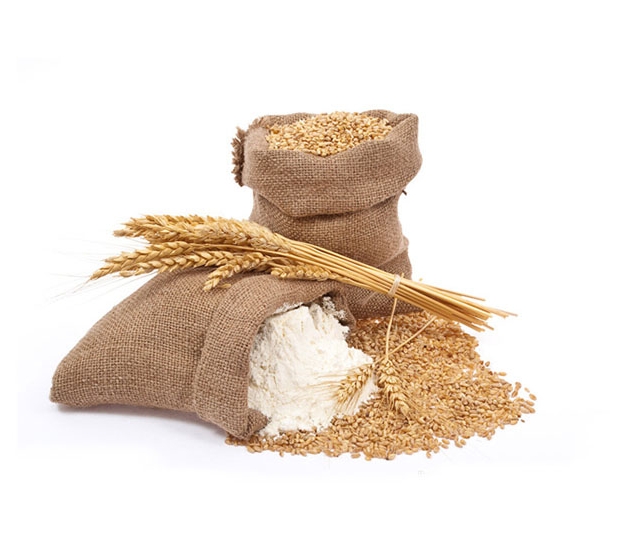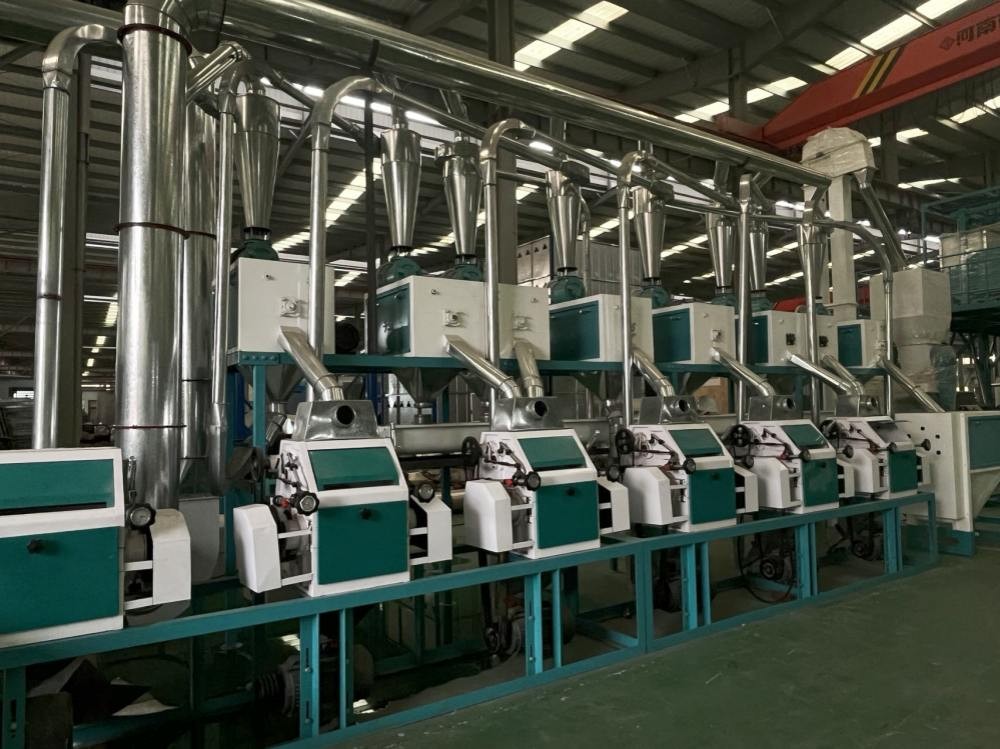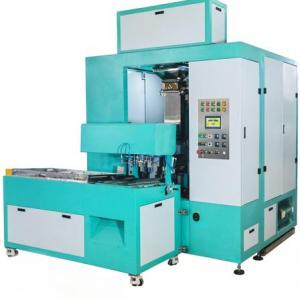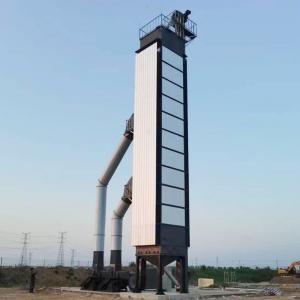15-20T wheat processing machinery, wheat milling
Applicable to:
1. Product types: wheat, corn, sorghum, soybeans and other miscellaneous grains;
2. This equipment is suitable for raw grains from different regions.Our equipment can be customized according to customer needs,and we can provide you with targeted services and solutions.
[Product Features]
1. The roller mill is manufactured with precision and manually controlled.
2. The complete set of large-scale wheat flour mills can adopt different configuration methods according to different choices.
There is a streamlined design and a reasonable layout.
3. It can be installed on steel frame structures or concrete buildings.
4. The large-scale powder mill has advanced technology and flexible adjustment.
5. We provide excellent after-sales service and spare parts for complete sets of large-scale grinding equipment.
[Process Flow] Raw Material Cleaning Impurities - Moisture Adjustment (Wheat Watering or Washing) - Moisturizing Wheat - Grinding and Screening - Grading - Packaging and Storage
1. Raw materials: Wheat is composed of three parts: wheat embryo, endosperm, and wheat husk. The percentage of each part by weight is: endosperm 82-85%, embryo 2-3%, wheat bran 12-14%. Endosperm contains a large amount of starch and some gluten composed of protein, which is the main raw material used to make various foods such as bread and pastries. Wheat bran contains abundant dietary fiber, which is an essential nutrient element for the human body.
2. Cleaning up impurities: mainly cleaning up impurities such as straw, sand, stones, damaged wheat, fuzz, and wild grass seeds in wheat that affect the flour yield. Usually, a combination of air screening is used to remove them, and the process adopts multiple steps such as three screening, two beating, two stone removal, one wheat washing, and two magnetic separation.
3. Moisture regulation: Due to the varying moisture content and physical characteristics of different varieties and regions of wheat, some are dry and hard, while others are wet and soft. After cleaning, moisture adjustment must be carried out to achieve the optimal moisture content. The purpose of water regulation is to make wheat absorb a certain amount of water, and the protein and starch in the endosperm are displaced due to different water absorption rates, making the endosperm loose and easy to crush Make the epidermis absorb water and become tough, so that it is not easily broken during grinding to avoid affecting the powder quality Stabilize the manufacturing process.
4. Moisturizing wheat: (Storing wheat that has been soaked or washed for a period of time is called moistening wheat) Storing wheat that has been soaked for a period of time is mainly to allow water to penetrate into the wheat grains, while also making the water between the grains uniform, making it easy to separate the wheat grain skin from the endosperm, and making it easy to grind. The increased toughness of the wheat skin prevents it from breaking and affecting the flour quality, thus providing conditions for the good and stable processing of the entire process and the compliance of the finished product's moisture standards. Due to different weather and geographical conditions, the wheat variety varies, and its soaking time is generally 8-24 hours. The optimal moisture content for ground wheat is 14-16%. The soaking time and moisture content of hard wheat are generally higher than those of soft wheat.
5. Grinding and powder making: light grinding and fine grinding, skin core separation grinding. Powder making adopts 4-5 skin grinding, 6-7 core grinding, 2-3 slag grinding, and is equipped with auxiliary equipment such as powder cleaning machine, bran grinding machine, impact loosening machine, etc. It needs to be ground step by step, sieved step by step, and circulated back and forth.
6. Grading: It can be divided into 65% special flour, 75% special flour, 80% standard flour, 5-15% secondary flour, and 20% bran; Equipment with a scale of 100-150 tons can produce grade powder, specialized powder, and precision standard co production.
7. Packaging and storage: Automatic packaging, can pack 5 kilograms, 10 kilograms, 25 kilograms, and 50 kilograms according to your needs. Flour is best packaged in breathable bags for easy storage.










 Afrikaans
Afrikaans Shqip
Shqip አማርኛ
አማርኛ العربية
العربية Հայերեն
Հայերեն Azərbaycan dili
Azərbaycan dili Euskara
Euskara Беларуская мова
Беларуская мова বাংলা
বাংলা Bosanski
Bosanski Български
Български Català
Català Cebuano
Cebuano Chichewa
Chichewa 简体中文
简体中文 繁體中文
繁體中文 Corsu
Corsu Hrvatski
Hrvatski Čeština
Čeština Dansk
Dansk Nederlands
Nederlands English
English Esperanto
Esperanto Eesti
Eesti Filipino
Filipino Suomi
Suomi Français
Français Frysk
Frysk Galego
Galego ქართული
ქართული Deutsch
Deutsch Ελληνικά
Ελληνικά ગુજરાતી
ગુજરાતી Kreyol ayisyen
Kreyol ayisyen Harshen Hausa
Harshen Hausa Ōlelo Hawaiʻi
Ōlelo Hawaiʻi עִבְרִית
עִבְרִית हिन्दी
हिन्दी Hmong
Hmong Magyar
Magyar Íslenska
Íslenska Igbo
Igbo Bahasa Indonesia
Bahasa Indonesia Gaeilge
Gaeilge Italiano
Italiano 日本語
日本語 Basa Jawa
Basa Jawa ಕನ್ನಡ
ಕನ್ನಡ Қазақ тілі
Қазақ тілі ភាសាខ្មែរ
ភាសាខ្មែរ 한국어
한국어 كوردی
كوردی Кыргызча
Кыргызча ພາສາລາວ
ພາສາລາວ Latin
Latin Latviešu valoda
Latviešu valoda Lietuvių kalba
Lietuvių kalba Lëtzebuergesch
Lëtzebuergesch Македонски јазик
Македонски јазик Malagasy
Malagasy Bahasa Melayu
Bahasa Melayu മലയാളം
മലയാളം Maltese
Maltese Te Reo Māori
Te Reo Māori मराठी
मराठी Монгол
Монгол ဗမာစာ
ဗမာစာ नेपाली
नेपाली Norsk bokmål
Norsk bokmål پښتو
پښتو فارسی
فارسی Polski
Polski Português
Português ਪੰਜਾਬੀ
ਪੰਜਾਬੀ Română
Română Русский
Русский Samoan
Samoan Gàidhlig
Gàidhlig Српски језик
Српски језик Sesotho
Sesotho Shona
Shona سنڌي
سنڌي සිංහල
සිංහල Slovenčina
Slovenčina Slovenščina
Slovenščina Afsoomaali
Afsoomaali Español
Español Basa Sunda
Basa Sunda Kiswahili
Kiswahili Svenska
Svenska Тоҷикӣ
Тоҷикӣ தமிழ்
தமிழ் తెలుగు
తెలుగు ไทย
ไทย Türkçe
Türkçe Українська
Українська اردو
اردو O‘zbekcha
O‘zbekcha Tiếng Việt
Tiếng Việt Cymraeg
Cymraeg isiXhosa
isiXhosa יידיש
יידיש Yorùbá
Yorùbá Zulu
Zulu